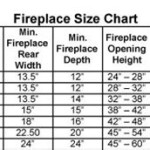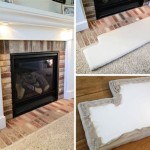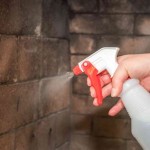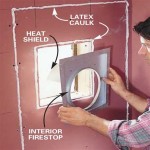Double-Faced Fireplace Inserts: A Comprehensive Overview
Double-faced fireplace inserts, also known as see-through or peninsula fireplaces, represent a sophisticated and functional heating solution for modern homes. These units differ substantially from traditional fireplace inserts with their ability to simultaneously heat two adjacent rooms. This article provides a detailed exploration of double-faced fireplace inserts, examining their functionality, advantages, installation considerations, efficiency, aesthetic appeal, and available options.
The core principle behind a double-faced fireplace insert centers on providing a visible and heat-radiating firebox that is accessible from both sides. Unlike a conventional fireplace insert, which is designed to be viewed and accessed from a single room, a double-faced insert features two glass or metal doors, allowing flames and heat to be enjoyed from two distinct living spaces. This design element introduces a unique architectural feature, acting as a visual partition while unifying the atmosphere of connected rooms.
Double-faced fireplace inserts are typically fueled by wood, gas, or electricity. While wood-burning models offer the classic appeal of a traditional fire, gas and electric options provide greater convenience and control over heat output. The choice of fuel source impacts not only the operational characteristics of the insert but also its installation requirements and overall efficiency.
Key Advantages of Double-Faced Fireplace Inserts
Double-faced fireplace inserts offer several distinct advantages compared to standard fireplace inserts and other heating solutions. These benefits stem from their unique design and ability to simultaneously serve two rooms.
Enhanced Heating Efficiency: One of the primary advantages is the enhanced heating efficiency. By radiating heat into two separate rooms, a double-faced insert can significantly reduce reliance on central heating systems, leading to lower energy bills. The efficient heat distribution also creates a more comfortable and consistent temperature throughout the connected living spaces.
Aesthetic Appeal and Architectural Element: Beyond its functional benefits, a double-faced fireplace insert serves as a compelling architectural element. The visible flames and the design of the insert itself can dramatically enhance the aesthetic appeal of both rooms it faces. It adds a touch of elegance, warmth, and sophistication, becoming a natural focal point in the home's interior design. Often these inserts are used to create a stunning visual break between a living room and dining room or kitchen, visually connecting the space while maintaining a sense of separation.
Space Optimization and Room Definition: Double-faced inserts can effectively define distinct living spaces within an open floor plan without creating a solid barrier. This is particularly beneficial in modern homes with open-concept layouts where defining individual areas can be challenging. The fireplace insert acts as a visual partition, delineating the boundaries of each room while maintaining a sense of flow and continuity. Furthermore, because it heats two spaces, it optimises the heating footprint of the unit instead of requiring two separate units.
Fuel Source Considerations
The selection of a fuel source – wood, gas, or electric – is a crucial decision when choosing a double-faced fireplace insert. Each fuel type presents its own set of advantages and disadvantages, impacting installation, operational costs, and environmental impact.
Wood-Burning Inserts: Wood-burning double-faced inserts offer the traditional appeal of a crackling fire and authentic wood-burning aroma. They can be a cost-effective heating solution in areas where wood is readily available. However, wood-burning inserts require a dedicated chimney for venting exhaust gases and necessitate regular maintenance, including ash removal and chimney cleaning. Furthermore, wood-burning inserts are subject to local regulations regarding emissions and wood burning restrictions.
Gas Inserts: Gas-fueled double-faced inserts provide a convenient and controllable heating option. They can be operated with natural gas or propane, offering a consistent and reliable heat source. Gas inserts typically feature adjustable flame heights and thermostat controls, allowing for precise temperature regulation. Installation requires a gas line connection and venting system that meets local building codes. While installation costs may be higher, gas inserts offer lower maintenance requirements and cleaner operation compared to wood-burning models.
Electric Inserts: Electric double-faced inserts offer the simplest installation process and the greatest flexibility in placement. They require only an electrical outlet and do not produce emissions, making them an environmentally friendly option. Electric inserts use heating coils or infrared technology to generate heat, which is then circulated by a fan. While electric inserts do not offer the same visual appeal as wood or gas fires, they are a safe and convenient alternative for homeowners seeking supplemental heating without the complexities of venting or fuel storage.
Installation Requirements and Safety Considerations
The installation of a double-faced fireplace insert is a complex process that requires careful planning and adherence to local building codes and safety regulations. Depending on the fuel source and the existing fireplace structure, installation may involve modifications to the chimney, framing, and gas or electrical connections. It is highly recommended to engage qualified professionals for the installation process to ensure safe and proper operation.
Structural Integrity: Before installing a double-faced insert, the structural integrity of the existing fireplace and chimney must be assessed by a qualified professional. The added weight of the insert may require reinforcement of the fireplace foundation or chimney structure. In some cases, a completely new chimney system may be necessary, especially for wood-burning inserts.
Venting and Airflow: Proper venting is crucial for safe and efficient operation, particularly for wood-burning and gas inserts. The venting system must be appropriately sized and installed to prevent the buildup of harmful gases, such as carbon monoxide. Adequate airflow around the insert is also essential to prevent overheating and ensure proper combustion. Building codes typically dictate specific requirements for venting and airflow based on the fuel source and the insert's BTU output.
Safety Features: Most double-faced fireplace inserts incorporate safety features such as safety glass panels to prevent accidental contact with hot surfaces, as well as oxygen depletion sensors (ODS) for gas inserts to shut off the gas supply in the event of low oxygen levels. Regular maintenance and inspection of these safety features are essential to ensure continued safe operation.
Clearances and Combustible Materials: Compliance with clearance requirements from combustible materials is paramount. Manufacturers specify minimum distances that must be maintained between the fireplace insert and surrounding materials such as wood framing, drywall, and furniture. Failure to adhere to these clearances can create a fire hazard.
Efficiency and Heat Output
The efficiency of a double-faced fireplace insert refers to the percentage of fuel energy that is converted into usable heat. Higher efficiency ratings translate to lower fuel consumption and reduced heating costs. The heat output, measured in British Thermal Units (BTUs), indicates the amount of heat the insert is capable of producing per hour. Choosing an insert with the appropriate BTU output for the size of the rooms it will be heating is essential for optimal comfort and energy efficiency.
ปัจจัยที่มีผลต่อประสิทธิภาพ: Several factors influence the efficiency and heat output of a double-faced fireplace insert. These include the fuel source, the design of the firebox, the insulation properties of the unit, and the efficiency of the venting system. Wood-burning inserts typically have lower efficiency ratings compared to gas or electric models due to incomplete combustion and heat loss through the chimney. Gas inserts with sealed combustion chambers and advanced burner technology can achieve higher efficiency levels. Electric inserts are generally considered the most efficient, as they convert virtually all of the electrical energy into heat.
BTU Considerations: Selecting an insert with the appropriate BTU output is crucial for effective heating. A general guideline is to use 20 BTU per square foot of living space for a well-insulated home. However, factors such as ceiling height, window size, and insulation levels can affect the heating requirements. Consulting with a heating professional can help determine the optimal BTU output for specific needs.
Design and Aesthetic Considerations
Double-faced fireplace inserts are available in a wide range of designs and styles to complement various architectural aesthetics. From traditional to contemporary, there are options to suit diverse tastes and preferences. The design of the firebox, the frame, and the glass or metal doors all contribute to the overall aesthetic appeal of the insert.
Traditional Designs: Traditional double-faced inserts often feature ornate detailing, such as decorative cast iron frames, brick liners, and simulated log sets. These designs evoke the classic charm of a traditional wood-burning fireplace, adding a touch of warmth and nostalgia to the home.
Contemporary Designs: Contemporary double-faced inserts typically feature clean lines, minimalist designs, and modern materials. These inserts often incorporate large glass viewing areas, allowing for an unobstructed view of the flames. Contemporary designs may also include features such as linear burners, colored glass media, and remote control operation.
Framing and Finishing: The framing and finishing around the fireplace insert can further enhance its aesthetic appeal. Options include custom-built mantels, stone or tile surrounds, and decorative trim. The choice of materials and finishes should complement the overall design of the room and create a cohesive visual statement.
Customization Options: Many manufacturers offer customization options for double-faced fireplace inserts, allowing homeowners to personalize the design to their specific preferences. Customization options may include choosing from a variety of frame finishes, glass options, and burner styles. By customizing the insert, homeowners can create a unique focal point that reflects their individual style and enhances the beauty of their home.
Maintaining a Double-Faced Fireplace Insert
Proper maintenance of a double-faced fireplace insert is crucial for ensuring its safety, efficiency, and longevity. The specific maintenance requirements vary depending on the fuel source and the design of the insert. However, some general maintenance practices apply to all types of double-faced fireplace inserts.
Regular Cleaning: Regular cleaning of the glass doors and the firebox is essential to maintain a clear view of the flames and prevent the buildup of soot and creosote. Use a specialized fireplace glass cleaner to remove stubborn stains and grime. For wood-burning inserts, it is important to regularly remove ash from the firebox to ensure proper airflow.
Chimney Inspections and Cleaning: For wood-burning and gas inserts that vent through a chimney, regular chimney inspections and cleaning are crucial. A qualified chimney sweep should inspect the chimney annually to identify any potential problems, such as cracks, blockages, or creosote buildup. Chimney cleaning should be performed as needed to remove creosote and prevent chimney fires.
Component Inspections: Periodically inspect the various components of the fireplace insert, such as the burner, the pilot light, the gas valve, and the electrical connections. Look for any signs of wear, damage, or corrosion. Replace any worn or damaged parts promptly to ensure safe and efficient operation.
Professional Servicing: Schedule professional servicing of the fireplace insert at least once a year. A qualified technician can perform a thorough inspection of the unit, clean and adjust the burner, check the gas pressure, and test the safety features. Professional servicing can help identify and address potential problems before they escalate into costly repairs.

Double Sided Fireplace Insert 1050 Jetmaster Wood Burning

Statuette Of Double Sided Gas Fireplace Warmer Unique Room Divider And Interior Accent Remodel Freestanding

Flex 60db Bx1 Double Sided Fireplace Insert Ecosmart Fire

Double Sided Fireplace Insert 2 1 Rais Wood Burning

Fireplaceinsert Com Supreme Opus Double Sided Fireplace

Nickel By Lacua The New Double Sided Woodburning Insert News

Flex 122db Double Sided Fireplace Insert Ecosmart Fire

Double Sided Fireplace Insert NÉo 67 76 Vl1 D Supra France Wood Burning

Fpi 3 Fireplace Insert Double Sided Pilot Rock

Flex 158db Double Sided Fireplace Insert Ecosmart Fire








